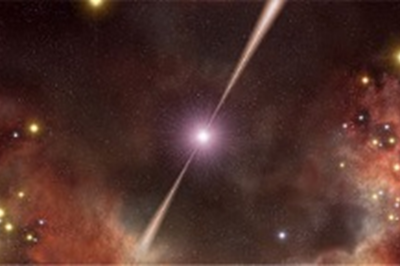Gamma-ray bursts (GRB) originate from the merger of a pair of neutron stars and are characterized by a very short duration of the high-energy emission, highly focused, not always visible from the Earth but which can be extremely bright for a short time and can be seen with optical telescopes.
By analyzing the data collected on short GRB, starting from the first observation made in 2005, the study confirmed that the merger of pairs of extremely dense objects like black holes or neutron stars (coalescence is the physical phenomenon by which the drops of a liquid, for example, or the bubbles of a gaseous substance, or the particles of a solid, merge to form larger agglomerations), in addition to GRB, often produces a special explosive event known as kilonova or macronova, which activates the radioactive decay of heavy chemical elements, producing gamma rays of higher intensity than the average, thousand times brighter than a nova, but always much dimmer than a supernova.
These coalescences would be at the origin of the production of most gold and other rare, heavy elements such as uranium, platinum, silver, etc., present in the Universe.
“An accurate analysis of the data available”, said Stefano Covino, “along with the latest theoretical developments in physics of kilonovae, has shown that, in a large part of these phenomena, kilonova emission is actually present and, therefore, can be observed with appropriate optical telescopes, such as ESO's VLT and theHubble space telescope, in order to obtain important data on the progenitor system”.
The discovery is particularly important in relation to the recent identification of gravitational waves, produced by the coalescence of a pair of black holes, and opens up new perspectives for astronomy, marking the beginning of what is called multi-messenger astronomy, able to analyze and associate more information to obtain a more detailed description of many astrophysical objects, as well as a deeper verification of the current laws of physics.

For more information about this study, visit:
http://www.inaf.it/en/inaf-news/new-discoveries-about-gamma-ray-bursts
